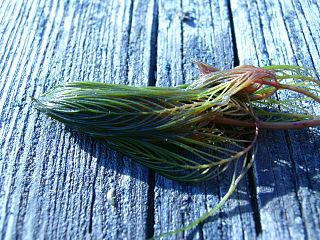INVASIVE PLANT SPECIES IN THE LAKE
Beginning in 2018 the PLIA began some projects to discover the presence of invasive plant species in the lake.In some lakes, these invasive species – particularly Eurasian Water Milfoil - have gotten out of hand and have required eradication by chemicals. That makes it extremely important to precisely locate where they are so you can effectively target them treatment. The chemicals used for this purpose are very specific to milfoil and do not impact native plants or other aquatic life. |
|
In 2018 we commissioned an aerial drone survey to quantify the size and location of weed beds in the lake so we can then sample and determine plant species and compare with previous surveys. If we discover invasive species, then we can determine whether or not we may be able to control the spread. The main culprit is Eurasian milfoil that has wreaked havoc with other area lakes. It is difficult to find these plants and determine how far they have spread but the process may be enhanced by taking a bird’s eye view from above. These aerial images can be assembled with computer software to create an “orthomosaic” or a 3-D reconstruction of the vegetation patterns on the bottom of the lake. This survey identified multiple locations within the lake that were suspected to contain invasive species.
In 2019 and 2020 we followed up on our 2018 Aerial drone survey of lake to quantify impact of Eurasian milfoil by participating with the Benzie Conservation District in physically sampling plants identified by the survey.
In 2021 we acquired a Deep Trekker remotely operated underwater vehicle ROV that is equipped with a high quality video camera that will allow us to “see underwater” to explore these suspect areas to determine the species and extent of underwater plants. Check out the Deep Trekker in action!


